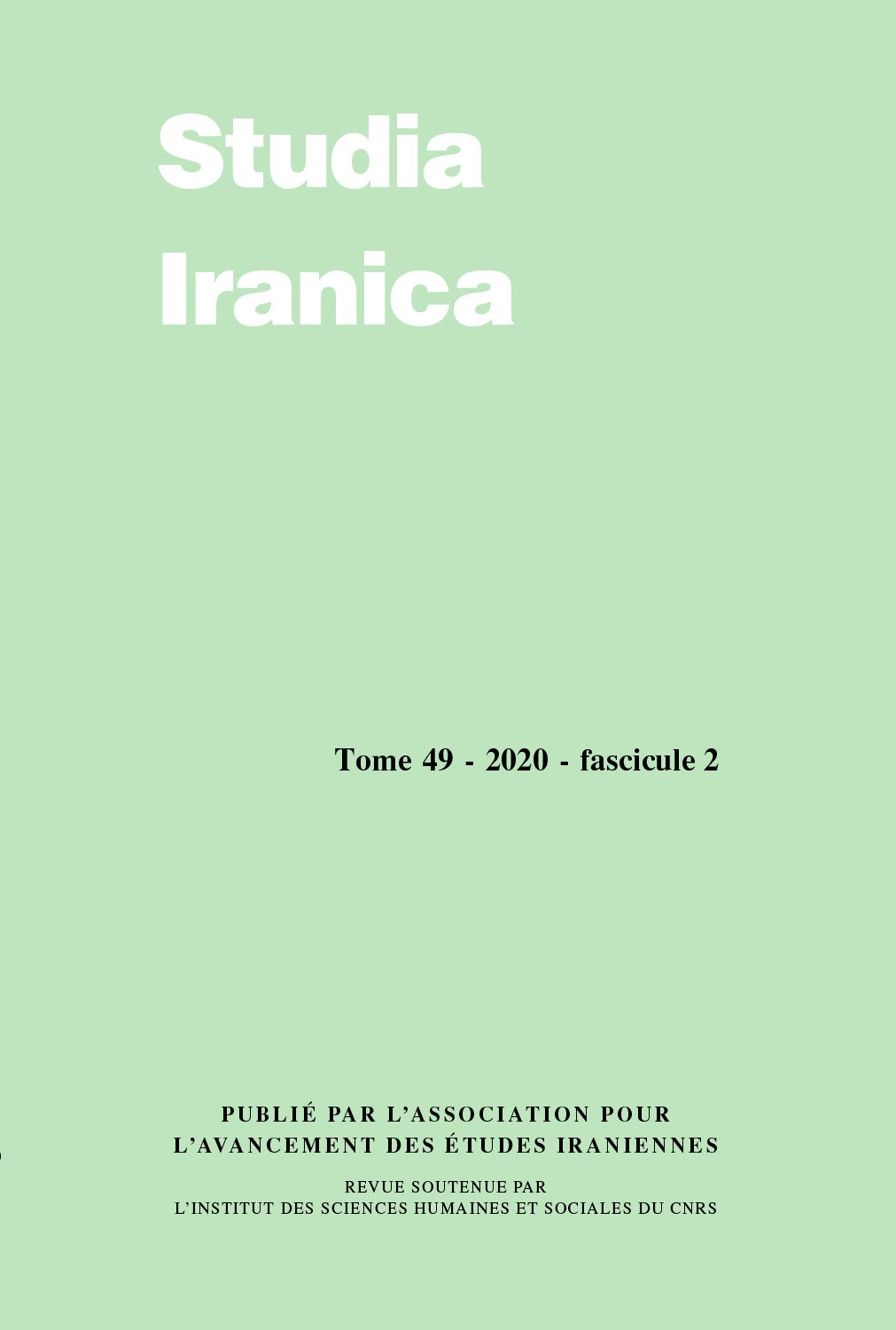 previous article in this issue previous article in this issue | next article in this issue  |

Preview first page |
Document Details : Title: Notes sur deux textes ḥurūfī Subtitle: le Jāvdān-nāma de Faḍlallāh Astarābādī et l'un de ses commentaires, le maḥān-nā:ma de Sayyid Isḥāq Author(s): MIR-KASIMOV, O. Journal: Studia Iranica Volume: 35 Issue: 2 Date: 2006 Pages: 203-235 DOI: 10.2143/SI.35.2.2018347 Abstract : Le Jāvdān-nāma de Faḍlallāh Astarābādī (m. 796/1394) est le texte fondateur du mouvement ḥurūfī, mouvement aux sympathies chiites de tendance gnostique et messianique apparu en Iran dans la deuxième moitiè du XIVe siècle. Le maḥān-nā:ma est un commentaire rédigé par Sayyid Isḥāq Astarābādī, disciple direct de Faḍlallāh. La comparaison de ces textes, centrée ici sur deux thèmes, c'est-à-dire la conception du temps et la prophétologie, fournit quelques éléments de réflexion sur le rapport entre le texte originel ey ses commentaires et donc sur une lente évolution, survenue très tôt, au sein même de la pensée ḥurūfī naissante. The Jāvdān-nāma of Faḍlallāh Astarābādī (d. 796/1394) is the basic text of the Ḥurūfī movement, a Gnostico-Messianic trend with Shiite sympathies which originated in Iran in the second half of the 14th century. The maḥān-nā:ma is a commentary written by Sayyid Isḥāq Astarābādī, a direct disciple of Faḍlallāh. The comparison of these texts undertaken in this article is focused on the two topics -the concept of Time, and the Prophetology. It gives us some elements for the reflection on the relationship between the original text and its commentaries and, therefore, on a slow evolution of original ideas already taking place at the early stage of the Ḥurūfī thought. |
|


